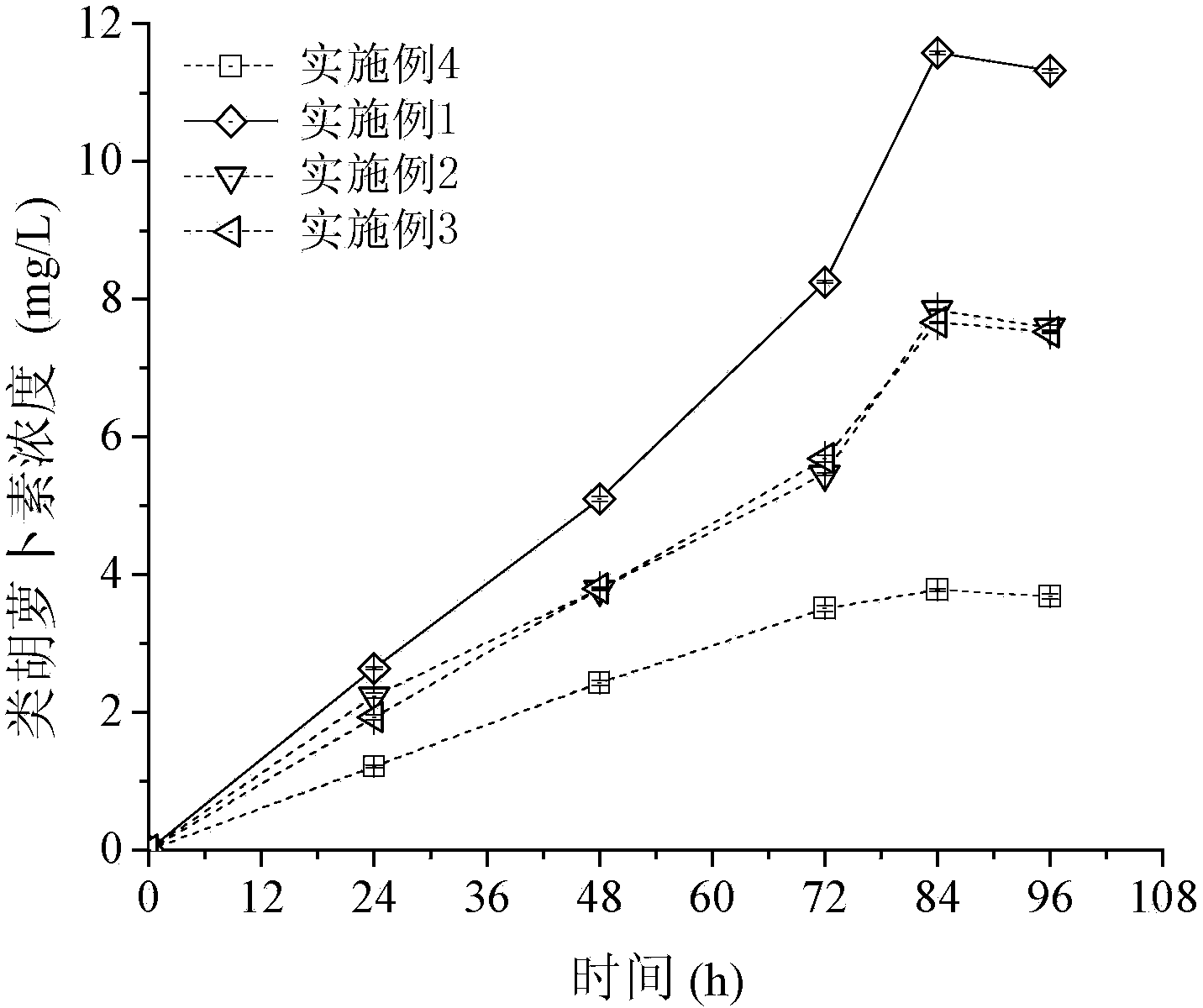Method for producing carotenoids by using food organic wastewater
A technology of organic wastewater and carotene, applied in the direction of microorganism-based methods, biochemical equipment and methods, microorganisms, etc., can solve the problem of limited degradation ability, less substrates for carotenoid synthesis, and low yield of carotenoids in bacteria, etc. problem, to achieve the effect of increasing yield, improving utilization rate and improving COD removal rate
- Summary
- Abstract
- Description
- Claims
- Application Information
AI Technical Summary
Problems solved by technology
Method used
Image
Examples
specific Embodiment approach 1
[0020] Specific embodiment one: this embodiment utilizes food organic waste water to produce carotenoids according to the following steps:
[0021] 1. Adjust the pH value of food organic wastewater to 6.5-8.0, and then add Rhodobacter sphaericus and growth-promoting bacteria in the logarithmic growth phase;
[0022] 2. The food organic wastewater added with Rhodobacter sphaericus and growth-promoting bacteria is treated for 72-96 hours under micro-aerobic conditions with a light intensity of 500-3000 lux and a treatment temperature of 25-30°C;
[0023] 3. Recovery and extraction to obtain carotenoids;
[0024] Wherein, in step 1, 360 mg of Rhodobacter sphaeroides bacterium liquid was added to every liter of food organic wastewater, and the concentration of Rhodobacter spheroides bacterium liquid was 6.2×10 8 ~7.0×10 8 cfu / mL;
[0025] In step 1, 20-80 μL of growth-promoting bacteria solution was added to every 100 ml of food organic wastewater. The growth-promoting bacteria...
specific Embodiment approach 2
[0030] Embodiment 2: The difference between this embodiment and Embodiment 1 is: the COD value of food organic wastewater is 8000-15000 mg / L, the TN value is 500-2000 mg / L, and the TP value is 20-50 mg / L. Other steps and parameters are the same as those in Embodiment 1.
specific Embodiment approach 3
[0031] Embodiment 3: The difference between this embodiment and Embodiment 1 or 2 is that in Step 1, 30-70 μL of growth-promoting bacteria solution is added to every 100 ml of food organic wastewater. Other steps and parameters are the same as those in Embodiment 1 or 2.
PUM
| Property | Measurement | Unit |
|---|---|---|
| chemical oxygen demand (mass) | aaaaa | aaaaa |
Abstract
Description
Claims
Application Information
 Login to View More
Login to View More - R&D
- Intellectual Property
- Life Sciences
- Materials
- Tech Scout
- Unparalleled Data Quality
- Higher Quality Content
- 60% Fewer Hallucinations
Browse by: Latest US Patents, China's latest patents, Technical Efficacy Thesaurus, Application Domain, Technology Topic, Popular Technical Reports.
© 2025 PatSnap. All rights reserved.Legal|Privacy policy|Modern Slavery Act Transparency Statement|Sitemap|About US| Contact US: help@patsnap.com



